I have been tracking the IVO dual quantized inertia drives on the Barry-1 satellite since Jan 24, 2024. The Barry-1 satellite only has the quantized inertia drives with 0.25 millinewtons and 0.65 millinewtons of thrust.
UPDATE- Orbital weirdness is normal. The drives are not activated and the Semi-Major Axis charting is what matters with orbit altitude.
The velocity has not changed since I started looking at the Norad tracker about 10 days ago. It has been at 4.72 miles per second, but about an hour into its orbit is at 4.73 miles per second at a lower perigee of 510 km. Yesterday I was seeing 317 miles to 329 miles. (511 km to 530 km). Norad was forecasting 10-day Perigee: 512.3 km Apogee: 525.8 km. This seems to have changed.
I was not tracking the satellite in December, 2023 but Scott Manley was. Scott used Celstrak had the altitude dropping from 519 kilometers in early December down to 513 kilometers on Jan 8, 2024. The satellite rose to apogee 535 kilometers but is an altered orbit that drops to perigee 510 kilometers.
The orbit seems to have substantially altered. ALERT: Would some other people check the Barry-1 satellite orbit and movement. It looks to me like the drives are working. I was checked and I was wrong.



However, thanks to @CelesTrak I can look at the satellite's orbital elements and see that since the start of December the only way the spacecraft is going is down.
It's almost like their thruster which doesn't need fuel isn't working 🤔 pic.twitter.com/u67rSINUSn— Scott Manley (@DJSnM) January 11, 2024
Potentially Worldchanging
Background: According to standard physics we cannot travel to the stars in a human lifetime because we need impractical amounts of fuel to get close to light speed. However, a new theory of inertia has been proposed called Quantized Inertia (QI). It predicts standard inertia, as a vacuum effect, at normal accelerations. It also predicts a drop in inertia at low accelerations that predicts disc galaxy rotation without dark matter. Therefore it has solid empirical backing.
Objective: Quantized inertia predicts that a new kind of propulsion can be achieved by energizing the vacuum and making gradients in it using synthetic ‘horizons’ (conductive materials). This form of propulsion does not need heavy fuel, only an energy source, so it would allow interstellar travel in a human lifetime. DARPA funded lab work 2018-2022 to demonstrate this prediction unambiguously in the lab.
Method: $1.3M was won from DARPA to test this prediction and a network of, so far, six labs have joined the effort, formerly and informally. The methods used include firing lasers into asymmetric metal cavities, lasers into fibre-optic flouride glass loops shielded by metal on one side, high-acceleration electrons in capacitors, and other methods.
The IVO system uses the capacitor cavity method.
In 2023, they are getting good results from a capacitor with a dielectric between plates with 8 micron separation. McCulloch uses Aluminium plates and kapton dielectric but IVO Ltd experiment uses a solid dielectric. There are at least three groups working on the propulsion experiments and six labs worked on ground experiments. In Mike McCulluch lab at Plymouth, they saw 0.25 milliNewtons. IVO saw 52milliNewtons. IVO launched a satellite with 0.25 millinewtons and 0.65 millinewtons of thrust. All of the works is at about 1 watt of power because attempts to increase power causes problems at this time. There is still times when the system does not work.
Results: In 2021, one experiment had shown no thrust but several others have measured the thrust expected from the theory, with force to power ratios of for example 0.08 N/kW (comparable to ion drives, without needing fuel) and up to 100 N/kW (enough to enable launch). NOTE: that the most power is 1 watt systems with about 52 millinewtons. IVO launched a satellite with 0.25 millinewtons and 0.65 millinewtons of thrust.
NOW- The company IVO Ltd and DARPA want to confirm that the lab results are real. The Quantized Inertia drive has been launched into space and has been there for over two months. It has been outgassing so that any propulsive effect will be from the drive. They have also been performing the null tests and establishing a baseline that would be changed if the propulsion is working. The mission and drive are in a low power cube sat but if the ground work propulsion happens in space then over a few weeks or a few months the drive will be able to move the cube sat from low earth orbit up to geosynchronous. There would be no other way to explain than the propulsion works.
Conclusion: If the orbital test gives positive results and can be replicated and confirmed and the work scaled then interstellar travel within a human lifetime becomes possible. The 2021 talk will present the quantized inertia theory, the evidence for it, the experimental thruster results so far (where possible) and an outline of a QI-based interstellar propulsion system (horizon drive).
The drive method deployed into space is likely the laser fired into flouride gas fibre-optic loops shielded by metal on one side or is lasers fired into asymmetric metal cavities.
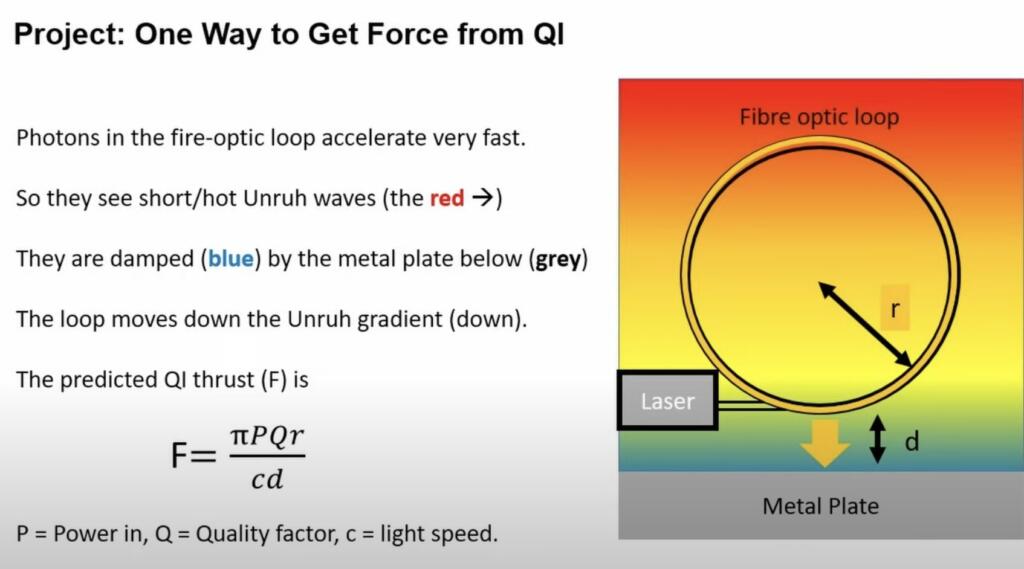
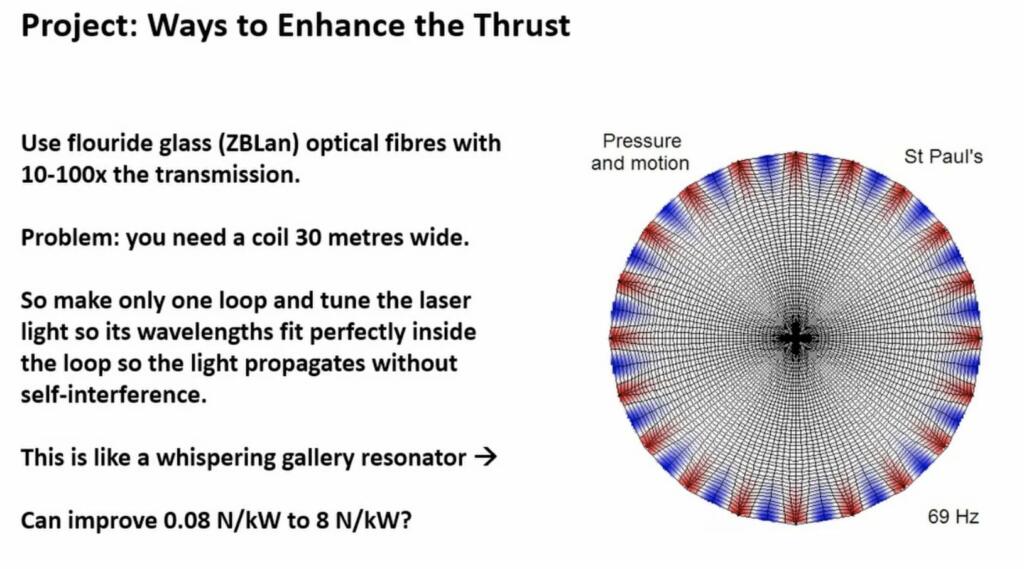


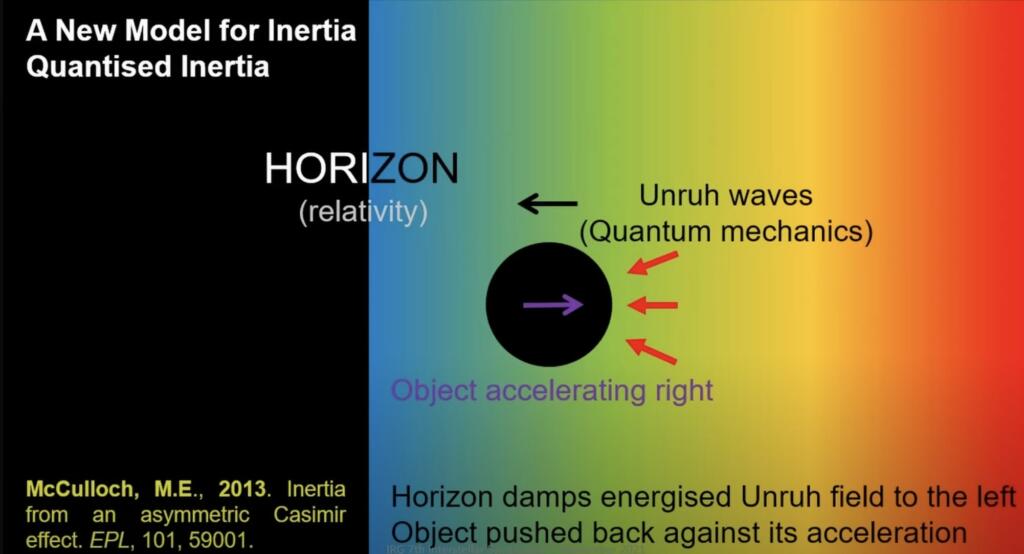
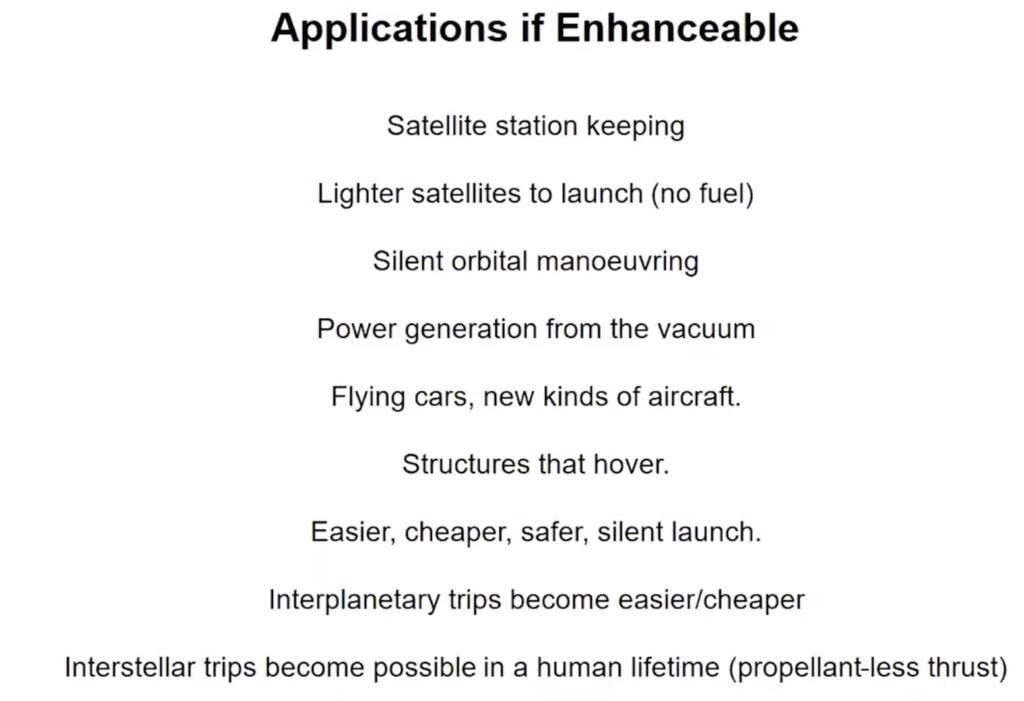


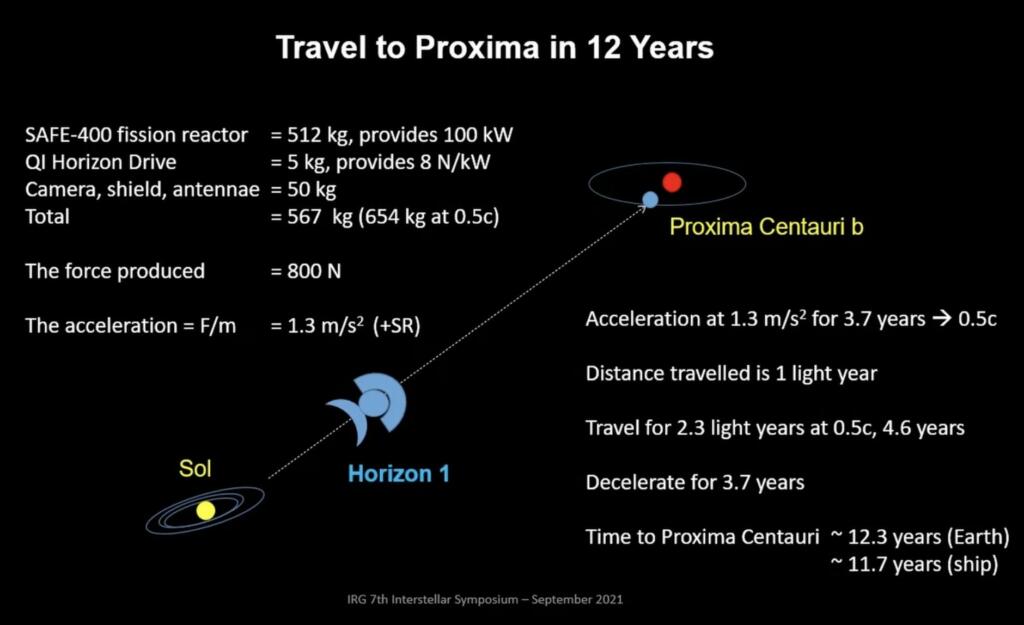



Brian Wang is a Futurist Thought Leader and a popular Science blogger with 1 million readers per month. His blog Nextbigfuture.com is ranked #1 Science News Blog. It covers many disruptive technology and trends including Space, Robotics, Artificial Intelligence, Medicine, Anti-aging Biotechnology, and Nanotechnology.
Known for identifying cutting edge technologies, he is currently a Co-Founder of a startup and fundraiser for high potential early-stage companies. He is the Head of Research for Allocations for deep technology investments and an Angel Investor at Space Angels.
A frequent speaker at corporations, he has been a TEDx speaker, a Singularity University speaker and guest at numerous interviews for radio and podcasts. He is open to public speaking and advising engagements.

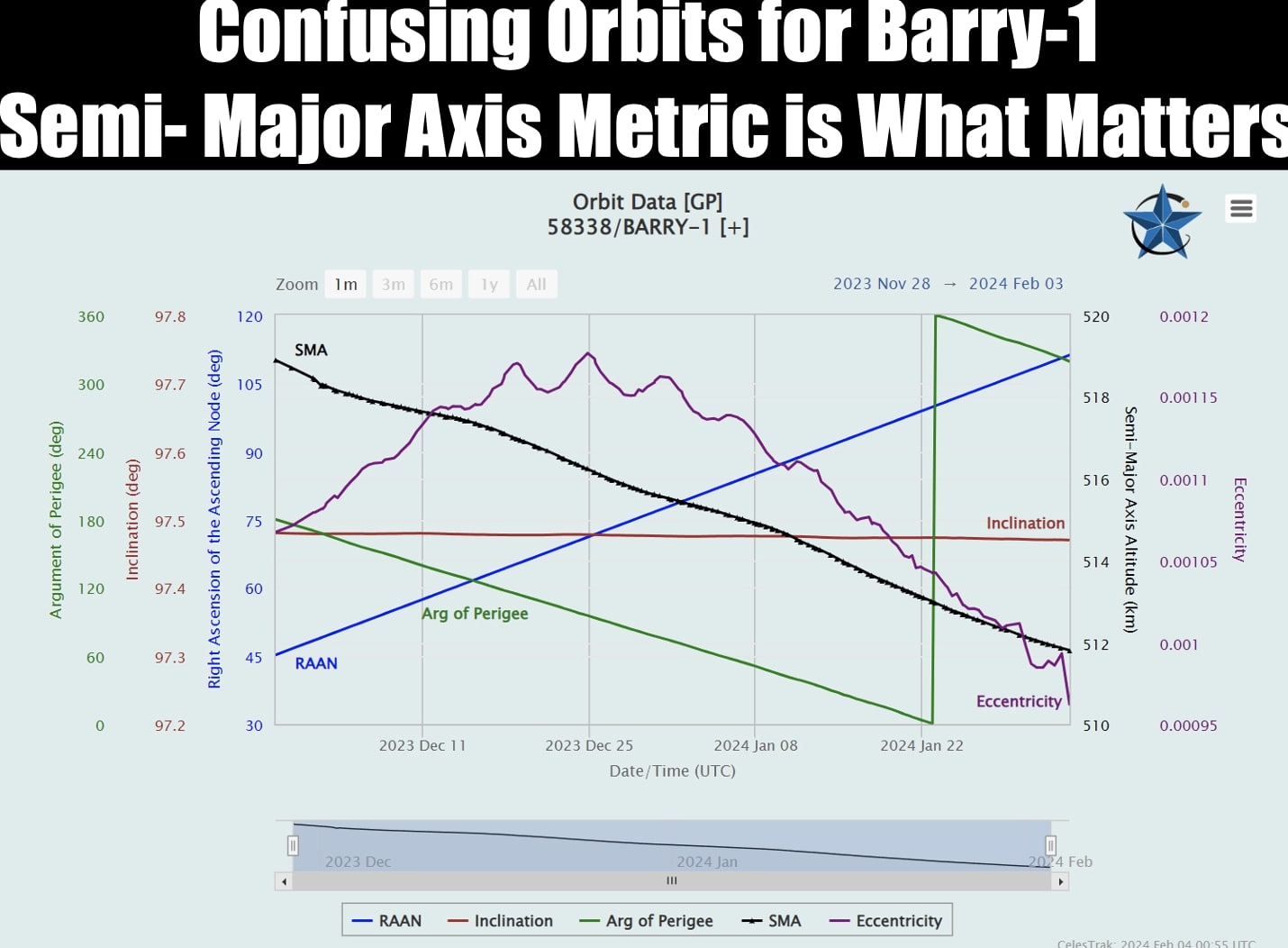
If the drive actually works, but works relative to some particular reference frame, you’d expect the orbit to show increasing eccentricity.
Looks like it peaked at 535.85km altitude, though I have some questions concerning altitude over what. A spherical earth? Oblate? Actual ground level?
Anyway, I guess I’ll take another look in 95 minutes.
[ i did not see, if they defined ‘altitude’, but there’s some influence to the 100’s km height above an average ‘sea level’
might be worth a look into?
‘The WMM2015 is valid for the period 1 January 2015 to 31 December 2019 at or near the Earth’s surface, up to a few hundred kilometers of altitude.’
mercator projection of main field (on AMSL?)
‘https://www.ngdc.noaa.gov/geomag/WMM/data/WMMReports/WMM2015_Report.pdf’ #page=66 (with extended interest, page 58, 3.2.5 DISTURBANCE FIELD CONTRIBUTION )
‘Height above mean sea level (AMSL) is the elevation (on the ground) or altitude (in the air) of an object, relative to a reference datum for mean sea level (MSL). It is also used in aviation, where some heights are recorded and reported with respect to mean sea level (contrast with flight level), and in the atmospheric sciences, and in land surveying. An alternative is to base height measurements on a reference ellipsoid approximating the entire Earth, which is what systems such as GPS do. In aviation, the reference ellipsoid known as WGS84 is increasingly used to define heights; however, differences up to 100 metres (328 feet) exist between this ellipsoid height and local mean sea level. Another alternative is to use a geoid-based vertical datum such as NAVD88 and the global EGM96 (part of WGS84). Details vary in different countries. ‘ ]
[ off topic: wrt ‘changing reflectivity on concentrated solar plant mirrors’ (~30yrs in-duty), there’s strong relation with a power plant reflector field’s temperature levels, humidity, irradiation, air quality (pH value, abrasive particles) and a mirror materials initial treatment (protection layers on/or back sheet, coatings), cleaning intervals/intensity&maintenance and movement profile for sun light/night adjustment (e.g. condensing humidity).
e.g. ‘ https://hal.science/hal-03492903/document#page=16 ‘
‘ https://elib.dlr.de/142753/1/2021_Buendia_Lifetime%20prediction.pdf#page=11 ‘
RLA: ‘2.1. Reflector materials’ page=3
visible range (humans) ~380-760nm ‘ https://en.wikipedia.org/wiki/File:Image-Metal-reflectance.png ‘
for ~20yrs it’s about ~1-3% loss of reflectivity for commercial grade mirror materials and ‘average’ surroundings (getting into 6-10% loss of reflectivity or even one example with 10% within ~13yrs for unsuitable/reduced protective coatings/paint and harsh environment), refl. generator parts ~6% of system cost (1sample data, thermal storage?, ~35%_2009data)
‘ CSP deployment has slowed down considerably as most of the above-mentioned markets have cancelled their support, as the technology turned out to be more expensive on a per kWH basis than solar PV and wind power. CSP in combination with Thermal Energy Storage (TES) is expected by some to remain cheaper than PV with lithium batteries for storage durations above 4 hours per day, while NREL expects that by 2030 PV with 10-hour storage lithium batteries will cost the same as PV with 4-hour storage used to cost in 2020.’
photovoltaic panels degradation averages ~0.5-0.8%/year (post yr 2000 materials&technologies) for crystalline, amorphous silicon towards multi layer, thin-film, modules cost ~37% of system installation cost for utility scale (‘~global average’, ~2021_data)
‘ https://www.nrel.gov/docs/fy12osti/51664.pdf#page=14 ‘ ]
” McCulloch uses Aluminium plates and kapton dielectric but IVO Ltd experiment uses a solid dielectric.”
Last time I looked, Kapton was a solid. So, what’s with that “but”?
How and why is it 26km higher then it was 28 days ago? Is this the result of sending commands to this object, and if so, why only 26kms? (If this new technology really works, this would be wonderful. My jury is still out.) Is it because of the amount of power available? I have dozens of questions, I won’t bore you to list them.
I see it 4.72 mps and losing altitude
We are so back?